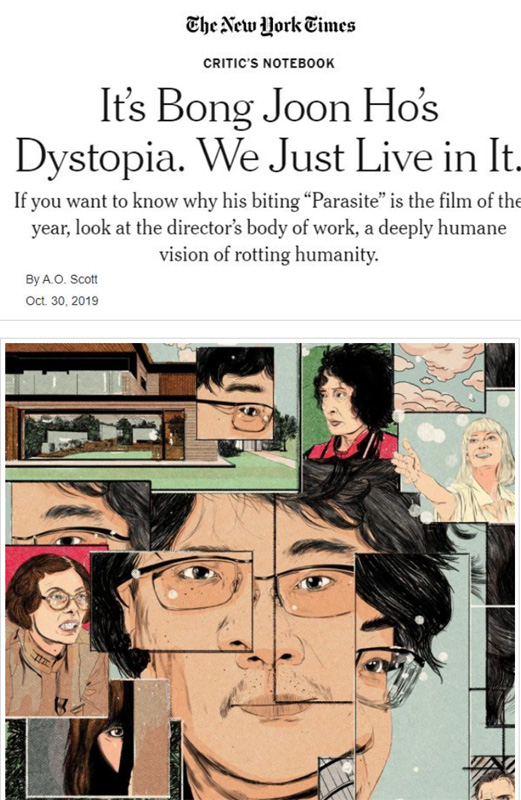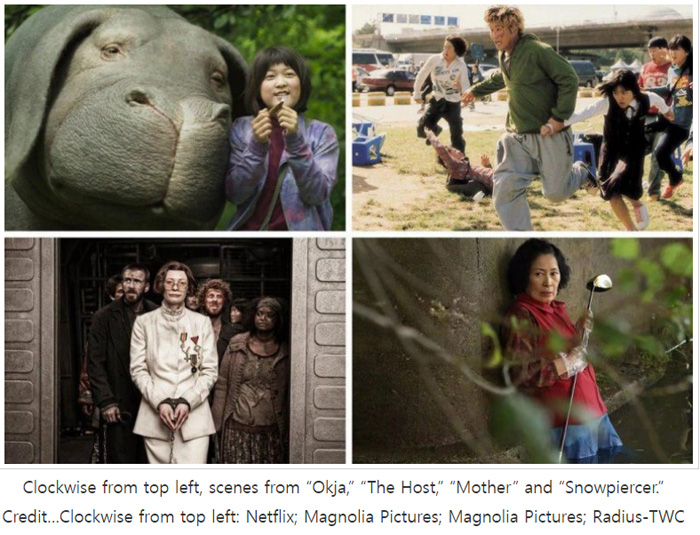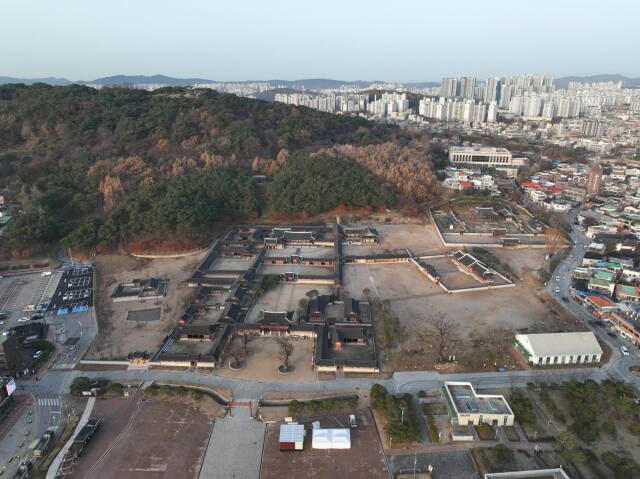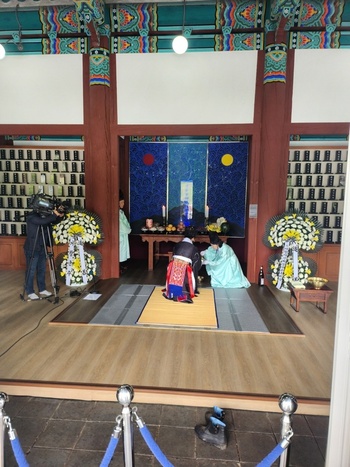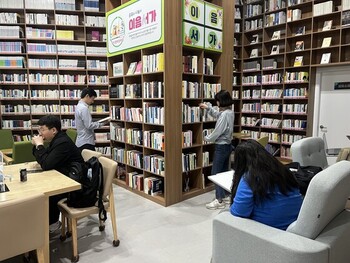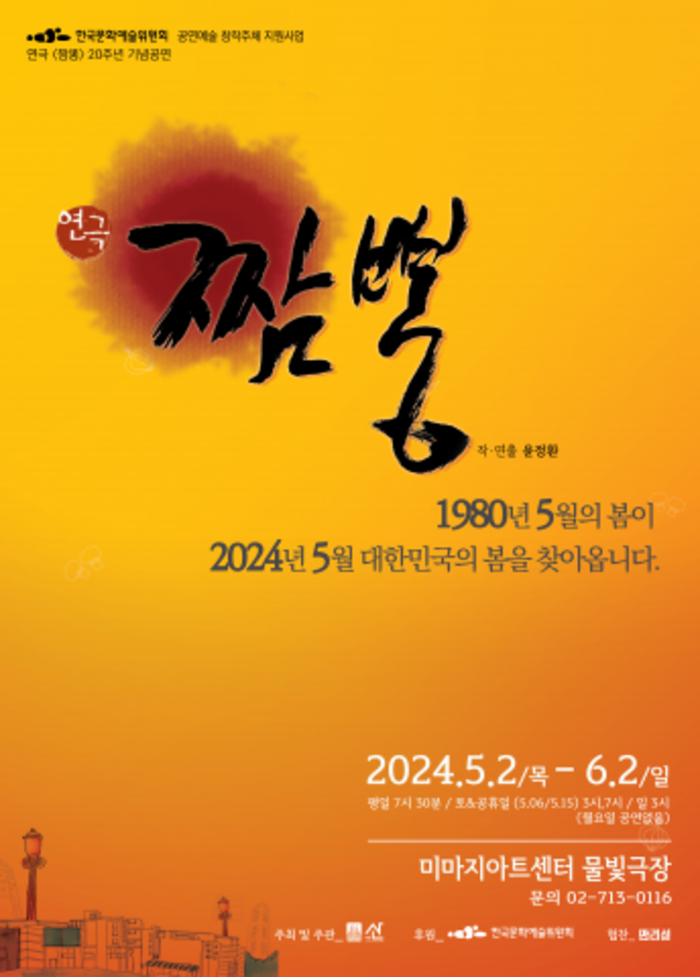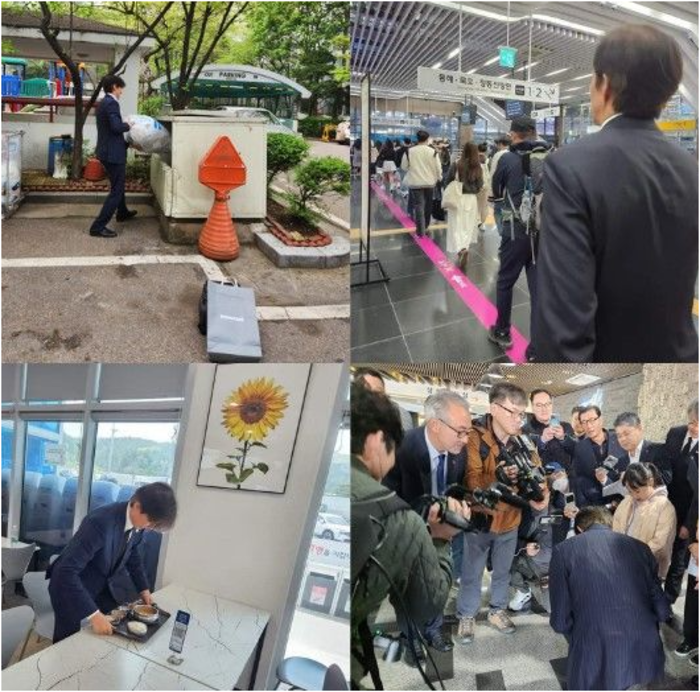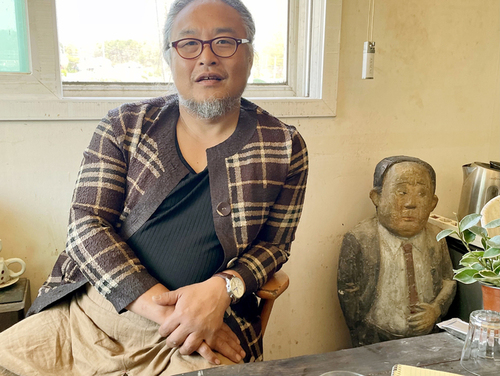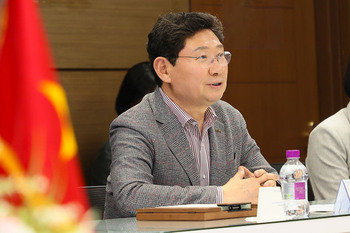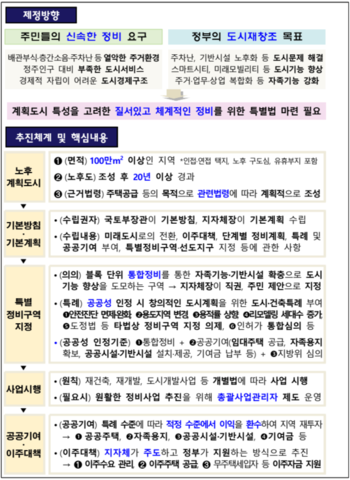|
봉준호 감독의 영화 ‘기생충’이 미국에서 폭발적 반응을 일으키고 있다. 2020년 아카데미 시상식 후보로 언급되고 있어 관심을 끄는 가운데, 뉴욕타임스가 영화 기생충과 봉준호 감독을 극찬한 기사를 내보냈다.
지난달 11일에 개봉한 기생충은 이미 봉감독의 미주 개봉영화 중 가장 많은 관객을 동원했던 설국열차(456만 3650달러)를 약 3주 만에 넘어선데 이어 지난 10일에는 개봉 한 달 만에 약 1천1백만 달러의 수익을 올려 2019 북미에서 가장 흥행한 외국영화에 등극했다.
뉴욕타임스는 지난달 30일 ‘봉준호의 디스토피아. 우리는 바로 그 안에 살고 있다’는 제목의 기사에서 ‘기생충’을 ‘올해의 영화’로 봉준호 감독을 ‘금세기 최고의 영화제작자’로 언급했다.
뉴욕타임스는 이 기사에서 ‘기생충뿐만 아니라 봉준호 감독이 제작한 영화들과 그의 영화를 바라보는 시선에 대해 집중적으로 조명하며 “’기생충’를 올해의 영화로 만드는 것, 그리고 봉준호 감독을 금세기 최고의 영화제작자로 만들 수도 있는 것은 그 영화가 환상적이면서 삶에 충실하고, 극명할 정도로 은유적이고 굉장히 충격적으로 구체화하는 데 성공하였기 때문이다.”고 극찬했다.
이 언론은 또 “봉준호 감독 영화에 대해 가장 놀랄만한 것은 그 영화들의 진지함, 다시 말해 원한, 나태함과 자기망상의 이야기 속에서 희미하게 빛나는 따스한 휴머니즘”이라며 “오늘날 인간 존재에 대해 많이 언급되는 것이 특징이라고 하면 그것은 가장 극단적이고 놀랄만한 허구의 환상 중 일부가 뉴스의 진부함으로 다시 나타나는 가운데, 그것이 얼마나 디스토피아적으로 느껴지는가라는 것”이라고 진단했다.
뉴욕타임스는 봉준호 감독의 영화에서 다루는 장면들, 즉 화재와 허리케인은 상징이라기보다는 신호처럼 느껴진다며 재앙이 임박했다는 징조라기보다 이미 들이닥친 재난의 증거이며 괴물들은 우리 사이를 돌아다니고 있고 부정부패는 정상적이며 가까운 친구나 친척을 제외하고 신뢰라는 것은 생각조차 할 수 없는 세상에 살고 있으며 이것은 봉준호 감독의 세계라고 규정했다.
다음은 뉴스프로가 번역한 뉴욕타임스의 기사 전문이다. 번역 감수: 임옥 기사 바로가기: https://nyti.ms/2JGc737
It’s Bong Joon Ho’s Dystopia. We Just Live in It. 봉준호의 디스토피아. 우리는 바로 그 안에 살고 있다.
If you want to know why his biting “Parasite” is the film of the year, look at the director’s body of work, a deeply humane vision of rotting humanity. 봉준호 감독의 신랄한 영화 “기생충”이 왜 올해의 영화인지 알고 싶다면, 썩어가고 있는 인간성에 대한 깊은 인도적 비전을 보여주는 그의 작품을 봐야 한다.
By A.O. Scott Oct. 30, 2019
“It’s so metaphorical!” Kim Ki-woo exclaims early in “Parasite,” Bong Joon Ho’s new film. Ki-woo is the college-aged son of one of the two families — the impoverished Kims and the wealthy Parks — whose fates entwine with horrible and hilarious results. He uses the phrase a few times, most notably with reference to the large, decorative “landscape rock” that is a gift from a better-off friend. In the interpretation of “Parasite” that emphasizes the movie’s fairy-tale aspects, the stone brings good fortune to Ki-woo, his sister and their parents, even as, like so many magical objects, it also curses them. (Spoilers follow, for “Parasite” and other Bong movies.)
“이건 아주 상징성이 있어요!” 김기우는 봉준호의 신작인 “기생충” 초반에서 이렇게 외친다. 기우는 운명이 서로 얽혀 끔찍하면서도 웃기는 결과를 자초하는 두 가정, 가난한 김씨네와 부유한 박씨네 중 한 쪽에 속한 대학생 나이의 아들이다. 기우는 특히 좀 더 잘 사는 친구로부터 선물 받은 커다란 장식용 “수석”을 가리키며 이 표현을 몇 차례 사용한다. “기생충”의 동화적 측면을 강조하는 해석에서 이 수석은 기우와 기우의 여동생, 부모에게 행운을 가져다 주는 동시에 대부분의 영험한 물건들이 그러하듯 저주도 내린다.(기생충을 비롯한 봉 감독 영화의 스포일러 주의!)
Before long, Ki-woo stops talking about metaphors. Maybe because things start getting real. He takes a job tutoring the Parks’ teenage daughter, Da-hye, and pretty soon his whole family is employed, under dubious premises and fake identities, in the Park household. His sister, pretending to be a highly trained art therapist, starts working with Da-hye’s younger brother, Da-song. The Kim patriarch, Ki-taek, replaces the chauffeur who drives Mr. Park to and from his fancy tech job. Kim Chung-sook, the mother of the clan (a former Olympic-level hammer-thrower), takes over as housekeeper.
얼마 지나지 않아 기우는 상징에 대한 언급을 멈춘다. 아마도 상황이 현실화되기 시작했기 때문일 것이다. 기우는 박씨네의 10대 딸 다혜의 가정교사로 일하게 되고 곧 이어 온 가족이 수상쩍은 근거와 가짜 신분으로 박 씨의 집안에 고용된다. 기우의 여동생은 고도로 훈련된 미술치료사인 척하며 다혜의 동생인 다송을 맡아 일을 시작한다. 김씨네의 가장인 기택은 근사한 IT 회사로 박 씨를 출퇴근 시키던 그의 운전 기사를 대신하게 된다. 엄마인 김충숙은(올림픽 투포환 선수 출신) 가정부 자리를 차지한다.
Or maybe — and it might amount to the same thing — the Kims’ reality has turned into an unsettling allegory of modern life, and Ki-woo doesn’t see metaphors in the way that a fish doesn’t notice water. What started out as a clever scam has turned into a fable.
혹은 아마도, 결국 같은 일일 수도 있지만, 김씨네의 현실은 현대의 삶이라는 불안한 알레고리로 전환되며, 마치 물고기가 물을 의식하지 못 하는 것처럼 기우는 상징을 알아차리지 못 한다. 재치있는 사기극으로 시작된 것이 우화로 바뀐 것이다.
In South Korea, where “Parasite” is already a blockbuster (having taken in more than $70 million at the box office), it has contributed to that country’s continuing debate about economic inequality. In the United States, where similar arguments are swirling, it has begun to turn Bong from an auteur with a passionate cult following into a top-tier international filmmaker. Fifty years old, with seven features to his name — most of them available on North American streaming platforms — he combines showmanship with social awareness in a way that re-energizes the faded but nonetheless durable democratic promise of movies.
한국에서 “기생충”은 이미 블록버스터(박스오피스에서 7천만 달러 이상을 벌어들임)가 되었고, 꾸준히 지속되어 온 빈부격차에 대한 논쟁에도 기여했다. 비슷한 논쟁이 일고 있는 미국에서 이 영화는 봉 감독을 열정적인 추종자를 가진 개성 있는 영화감독에서 최고 수준의 국제적인 영화제작자로 변신시키기 시작했다. 그간 일곱 작품(그의 작품 대다수는 북미에선 스트리밍으로 시청 가능하다)을 선보인 50세의 봉준호 감독은 과거만큼은 아니지만 아직도 충분히 내구력이 있는 영화라는 매체의 민주적 요소에 다시 활기를 불어넣음으로써 자신의 연출실력과 사회적 자각을 결합시킨다.
‘Parasite’ | Anatomy of a Scene ‘기생충’ 한 장면 해부 The cramped, leaky “semi-basement” apartment the Kims call home is a metaphor of sorts, and so is the spacious, modern, architecturally significant mansion where they work. The Park home in particular comes with built-in symbols, including a deep subbasement where inconvenient secrets can be stashed away, like dead bodies or hidden meanings in an Edgar Allan Poe story. And “Parasite,” which won the top prize in Cannes in May and has recently become the rare subtitled release to be mentioned as an Oscar contender beyond the foreign film category, plays out like a parable of contemporary social relations. It’s part horror film, part satire and part tragedy, conveying a sharp lesson about class struggle in South Korea and just about everywhere else.
김씨네 가족이 집이라고 부르는 비좁고 비가 새는 “반지하”는 일종의 상징이며, 그들의 일터인 넓고 현대적이고 건축학적으로도 의미 있는 고급 주택도 마찬가지다. 특히 박씨네 집은 시체 또는 에드가 앨런 포의 이야기 속, 숨은 의미 같은 불편한 비밀이 숨겨질 수 있는 깊숙한 지하실 밑의 지하실을 포함한 상징물들을 속에 지니고 있다. 5월 칸에서 최고의 상을 수상했고 최근 드물게 자막을 단 개봉작으로 외국 작품 범주를 넘어서 오스카 경쟁작으로 언급되고 있는 “기생충”은 현대 사회 관계에 관한 우화처럼 진행된다. 한국과 다른 어느 곳에서든 존재하는 계급 투쟁에 대한 날카로운 교훈을 전달하며 이 영화는 공포 영화인 한편, 풍자이기도, 그리고 비극 영화이기도 하다.
But the houses in the film — like every office, alley, field, railroad car and precinct house in Bong’s expanding cinematic universe — are also actual physical places. And their inhabitants are anything but symbols or ciphers. Bong likes to choreograph wildly improbable chases and fights, but he doesn’t cheat at physics. A reason for the frequent comparisons to Alfred Hitchcock and Steven Spielberg is the ruthless precision of his technique. But for all his love of whimsy and absurdity, he doesn’t play games with human psychology. The actions and reactions in his movies are often surprising, but they are never nonsensical. His characters have gravity, density, grace and a decent share of stupidity.
하지만 이 영화 속 집은 봉 감독의 날로 증대하는 영화적 가상 세계에 등장하는 모든 사무실, 골목, 들판, 열차 객실, 경찰서처럼 실재 물리적인 장소이다. 그리고 그곳의 거주자들은 상징물이나 암호가 아니다. 봉 감독은 실제 같지 않은 추격 장면이나 격투 장면을 연출하는 것을 좋아하지만 물리적인 부분에서 속임수를 쓰지 않는다. 봉 감독이 알프레드 히치콕 감독, 스티븐 스필버그 감독과 자주 비교되는 이유는 기술에 대한 한치도 벗어나지 않는 정확성 때문이다. 기발함과 부조리를 선호함에도 불구하고 봉 감독은 인간의 심리를 가지고 장난치지는 않는다. 봉 감독의 영화에서 행위와 그에 대한 반응이 종종 놀라울 때가 있지만 터무니없었던 적은 없다. 봉 감독의 등장인물들은 진지함, 우둔함, 우아함, 그리고 적절한 만큼의 어리석음을 가지고 있다.
To call Bong a realist, though, would be crazy. The movie of his that first caught the attention of genre geeks on a global scale was his third feature, “The Host” (released here in 2007), about a giant, carnivorous mutant fish spreading terror along the Han River in Seoul. In 2014 came “Snowpiercer” (based on a French graphic novel), which confirmed Bong’s status as an international action auteur. A gaggle of movie stars from Hollywood and beyond (including Chris Evans, Tilda Swinton and Song Kang Ho, the solid South Korean Everyman who has appeared in four of Bong’s movies and who plays the Kim patriarch in “Parasite”) were packed into a high-speed train zooming around an apocalyptically frozen earth. The passengers were sorted into haves and have-nots, rebels and sellouts, and their struggles were both surprising and grimly familiar.
그렇다고 봉 감독을 현실주의자라고 부르는 것은 말도 안 되는 일일 것이다. 봉 감독의 영화 중에서 처음 세계적으로 긱스 장르의 주목을 받은 것은 그의 세 번째 영화인 대형 돌연변이 육식 물고기가 서울의 한강에서 테러를 벌이는 내용의 “괴물(2007년 미국 개봉)”이었다. 2014년에 개봉한 “설국열차”(프랑스의 만화를 원작으로 함)는 국제적인 액션 감독으로서 봉 감독의 입지를 공고히 했다. 헐리우드를 비롯해 각지에서 온 영화 배우들(크리스 에반스, 틸타 스윈튼, 그리고 봉 감독의 영화 네 편에 출연했고 “기생충”에서 기택역을 맡은, 평범한 한국사람을 제대로 연기하는 송강호 포함)이 종말이 온 것처럼 얼어붙은 지구를 내달리는 고속 열차를 빽빽이 채우고 있었다. 승객은 부자들과 가난한 자들, 반역자와 배신자로 분류되었고 그들의 투쟁은 놀랍기도 했지만 냉혹하도록 익숙했다.
That was followed by “Okja” (2017), an antic updating of the basic “Charlotte’s Web” material (a young farm girl fights to save the life of her beloved piglet) for an age of genetic engineering, mass media and multinational capitalism. Swinton returned, playing twin moguls, but the real stars were Ahn Seo Hyun, as the young girl, and the digitally rendered shoat whose soul was at stake in the hectic battles among scientists, executives, animal-rights activists and other motley human specimens.
유전공학, 대중매체, 다국적 자본주의 세대를 위한 원 “샬롯의 거미줄” 소재(한 농장 소녀가 사랑하는 돼지의 생명을 살리기 위해 싸운다)의 색다른 업데이트 버전인 “옥자”(2017년)가 그 뒤를 이었다. 틸다 스윈튼은 쌍둥이 거물을 연기하며 돌아왔지만 진짜 스타는 어린 소녀 안서현과 과학자, 경영자, 동물인권 운동가 및 온갖 인간 군상들 간의 정신 없는 다툼 속에서 영혼이 위태로웠던 컴퓨터 그래픽으로 만들어진 아기 돼지였다.
In obvious ways, “Parasite” is more realistic than those films. It returns Bong to the workaday Korean settings of his first two features, the grotesque comedy “Barking Dogs Never Bite” and the detective drama “Memories of Murder,” and also of “Mother,” his masterpiece (released here in 2010) about a woman whose mentally challenged adult son is accused of killing a schoolgirl. “Parasite” is more noir than science fiction, farcical until it turns melodramatic.
분명하게도 “기생충”은 위에서 언급된 다른 영화들보다 더 현실적이다. 이 영화에서 봉준호 감독은 자신의 첫 두 작품인, 괴기스런 코미디 영화 “플란다스의 개”와 수사 영화 “살인의 추억”, 그리고 여학생을 살해한 혐의를 받고 있는 정신지체아 아들을 둔 한 여성에 대한 그의 수작 “마더”의 평범한 한국적 설정으로 돌아온다. “기생충”은 공상과학 소설보다 더 누아르 풍이고 멜로드라마로 변할 때까지는 희극적이다.
But to sort Bong’s work by genre or style is to miss both its originality and consistency. His movies are bold and bright, infused with rich colors and emphatic performances. They are funny, suspenseful and punctuated by kinetic sequences that can make even jaded multiplex-potatoes sit up and gasp. There are at least a half-dozen such moments in “Parasite,” perhaps the most thrilling of which involves three people hiding under a living-room coffee table while another camps out in a tent in the backyard.
그러나 봉준호 감독의 작품을 장르와 스타일로 분류하는 것은 그 작품의 독창성과 일관성을 모두 놓치는 일이다. 그의 영화는 대담하고 밝으며 풍부한 색채와 강력한 연기를 담고 있다. 그의 영화들은 재미있고 긴장감이 넘치며, 심지어 영화에 물린 영화광들조차도 똑바로 앉아 숨을 멈출 정도로 동적인 장면들이 엮여 나온다. “기생충”에는 최소한 대여섯 군데의 그와 같은 순간들이 있다. 아마도 가장 긴장감이 높은 것은 한 인물이 뒤뜰에 텐트를 치고 야영하는 동안 다른 세 명의 인물이 거실 탁자 밑에 숨어있는 장면이다.
At the same time, his movies are dark and subtle, burrowing deep into sticky ethical problems and hot zones of social dysfunction. You could say that he uses blockbuster means to advance art-house ends. You could also say the opposite. His real achievement, though, is to scramble such facile distinctions, and a host of others as well.
동시에, 그의 영화들은 어둡고 은은하며, 다소 불편한 윤리적 문제와 사회적 기능 장애와 같은 핵심적인 논란의 영역을 깊이 파고 든다. 어떤 이들은 봉준호 감독이 블록버스터 성공을 통해 예술영화산업을 성장시킨다고도 말할 수 있을 것이다. 물론 그 반대의 주장을 피력할 수도 있다. 그러나 봉준호 감독의 진짜 업적은 그와 같은 피상적인 구분을 포함한 여러 것들에 있다.
His stories are often tragic, but the mood tends to be more exuberant than somber, an emotional effect that can be hard to describe. The full awfulness of human beings and their circumstances is on vivid display: venality, vanity, deception and outright cruelty. But the aim isn’t mockery or glib sensationalism, or the routine fusion of the laughable and the grotesque that has been a staple of Hollywood cool since the mid-1990s. The most shocking thing about Bong’s films might be their sincerity, the warm humanism that flickers through the chronicles of spite, sloth and self-delusion.
그의 봉준호 감독의 영화의 내용은 종종 비극적이지만, 그 분위기는 침울하기 보다는 생기가 넘치며, 이는 설명하기 힘든 감정적인 영향이다. 인간과 그들을 둘러싼 환경의 온갖 끔찍함, 즉 매수, 허영, 속임수와 노골적인 잔인함이 스크린에 생생하게 나타난다. 하지만 그 목적은 조롱이나 경박한 선정주의, 또는 1990년대 중반 이후 헐리우드의 주 소재가 되어온 터무니 없고 그로테스크한 것의 식상한 혼재가 아니다. 봉준호 감독 영화에 대해 가장 놀랄만한 것은 그 영화들의 진지함, 다시 말해 원한, 나태함과 자기망상의 이야기 속에서 희미하게 빛나는 따스한 휴머니즘이다.
The flickers are sometimes faint. In Bong’s debut feature, “Barking Dogs Never Bite”(2000), the humanism is all but buried in a gruesome, urban-legend-inflected conceit. A beleaguered graduate student, desperate to become a professor — an advancement that depends on his ability to come up with a large bribe for a senior figure in his field — is tormented by the barking of a neighbor’s dog. Since he lives in a vast, impersonal apartment block (the first of Bong’s metaphorical architectural spaces), he can’t identify the offending creature. The wrong dog ends up dying, more than once, and being eaten by a janitor with a taste for stewed canine flesh. Meanwhile the student’s marriage starts to crumble.
이는 때때로 희미하다. 봉준호감독의 데뷔작인 “플란다스의 개”(2000년)에서 기괴한 도시 괴담적인 반전에 휴머니즘은 완벽하게 묻혀있다. 필사적으로 교수가 되고 싶은, 말하자면 자기 분야의 선배에게 거액의 뇌물을 줄 만한 능력이 되느냐에 달린 그 출세를 원하는 한 절박한 대학원생이 이웃집의 개 짖는 소리에 괴로워한다. 그는 비인간적인 거대한 아파트 단지(봉준호 감독의 은유적인 건축 공간의 첫 번째인)에 살고 있기 때문에, 신경을 거슬리게 하는 그 개를 찾아낼 수가 없다. 엉뚱한 개가 결국 죽고, 개고기를 좋아하는 관리인에게 잡아 먹힌다. 그러는 동안 그 학생의 결혼생활은 망가지기 시작한다.
A measure of redemption — or at least a twinkle of mischief, innocence and decency — arrives via a subplot concerning a young woman in the building, and her friend, who works in a convenience store. They represent archetypal Bong characters: socially marginal, loyal to each other, but not necessarily heroic or noble by virtue of their poverty. Bong’s sense of class solidarity, which threads through every one of his movies, doesn’t involve romanticizing the people on the losing end of an increasingly ruthless economic competition.
구원의 형태, 혹은 적어도 장난, 결백과 친절함은 건물 안에 사는 한 젊은 여성과 편의점에서 일하는 그녀의 친구에 관한 복선을 통해 나타난다. 그들은 전형적인 봉준호 감독의 등장인물들이다: 그들은 사회적으로 주변인이자 서로에게 의리를 지키지만 자신들의 가난 때문에 결코 영웅적이거나 고귀하지 않다. 봉준호 감독의 모든 영화 속을 관통하는 계급적 연대감은 점점 무자비해지는 경제적 경쟁에서 패배한 측의 사람들을 근사하게 만들지는 않는다.
The Kims in “Parasite” aren’t necessarily nicer, more loving or more honest than the bourgeois Parks. The small-town police officers in “Memories of Murder” are hardly pillars of virtue. The snack vendor played by Song in “The Host,” who enlists his father and his siblings in a valiant crusade to save his daughter from the monster, is a bit of an oaf. The mother in “Mother,” who sells herbs and practices acupuncture without a license, pushes maternal devotion to the point of homicide.
“기생충”에 나오는 김씨 가족은 부르주아인 박 씨 일가보다 꼭 더 좋은 사람이거나 더 친절하거나 더 정직하지도 않다. “살인의 추억”에 나오는 작은 마을의 경찰들은 미덕의 실체도 아니다. 영화 “괴물”에서 송강호가 연기한 역할, 괴수로부터 딸을 구하기 위해 용맹한 전쟁에 자신의 아버지와 형제들을 끌어들이는 매점 주인은 좀 미련한 멍텅구리 같다. “마더”에서 약재를 팔고 무면허로 침을 놓는 엄마는 모성애를 살인의 경지로 몰아간다.
To sentimentalize or idealize any of these people would not only be a form of condescension. It would strip their stories of dramatic and moral interest, making them less disturbing, and also a lot less fun. The pleasure and the discomfort can’t be separated. We are watching players compete in a rigged game with potentially mortal stakes and unreliable referees. Institutions — schools, companies, governments — are comically and also lethally useless. There is no legitimate authority, only raw power. Family connections are the only bonds that count, but families are a mess. The only answer is a kind of wily resourcefulness, an on-the-fly problem-solving knack that can deliver at best small, local victories. That those can be satisfying is a tribute to Bong’s own wily resourcefulness and also to his radical compassion.
이 사람들 중 어느 한 사람을 감상적으로 만들거나 이상화하는 것은 단지 우월감인 것만은 아니다. 그것은 그들의 이야기에서 극적이고 도덕적인 관심사를 벗겨내서 그들을 덜 이상한 것, 또한 훨씬 덜 재미난 것으로 만든다. 즐거움과 불편함은 분리될 수 없다. 우리는 선수들이 잠재적으로 목숨을 잃을 수도 있는, 그리고 신뢰할 수 없는 심판들과 함께 하는 조작된 게임에서 경쟁하는 것을 지켜보고 있다. 학교, 기업, 정부 등 기관들은 우스꽝스럽고 또한 치명적으로 쓸모가 없다. 합법적인 정당한 권위는 없고, 오직 정제되지 않은 권력만 있을 뿐이다. 가족 관계는 유일하게 중요한 관계지만, 가족은 엉망진창이다. 유일한 해답은 기껏해야 작은 지엽적 승리를 가져다 줄 수 있는 임시방편적인 약삭빠른 지략이다. 그런 것들이 만족스러울 수 있다는 것은 봉준호 감독 자신의 약삭빠른 지략과 그의 급진적인 연민에 대한 찬사다.
What makes “Parasite” the movie of the year — what might make Bong the filmmaker of the century — is the way it succeeds in being at once fantastical and true to life, intensely metaphorical and devastatingly concrete.
“기생충”를 올해의 영화로 만드는 것, 그리고 봉준호 감독을 금세기 최고의 영화제작자로 만들 수도 있는 것은 그 영화가 환상적이면서 삶에 충실하고, 극명할 정도로 은유적이고 굉장히 충격적으로 구체화하는 데 성공하였기 때문이다.
There doesn’t seem to be much distance, in other words, between the dire futures projected in “Snowpiercer” and “Okja” — nightmares of technology and greed run amok — and the class-specific domestic spaces of “Parasite,” “Mother” and “Memories of Murder.” A much-remarked-on feature of human existence at the moment is how dystopian it feels, as some of the most extreme and alarming fantasies of fiction reappear as newsfeed banalities. Fires and hurricanes feel less like symbols than signals, evidence of a disaster that’s already here rather than omens of impending catastrophe. Monsters walk among us. Corruption is normal. Trust, outside a narrow circle of friends or kin, is unthinkable. Whether we know it or not, it’s Bong’s world we’re living in. Literally.
다시 말해, “설국열차”와 “옥자”에 투영된 즉 과학 기술과 탐욕이라는 악몽이 미친 듯이 날뛰는 끔찍한 미래와 “기생충”, “마더”, “살인의 추억”의 계층별 구체적인 한국 사회의 공간 사이에는 그다지 거리가 있어 보이지 않는다. 오늘날 인간 존재에 대한 많이 언급되는 특징이라고 하면 그것은 가장 극단적이고 놀랄만한 허구의 환상 중 일부가 뉴스의 진부함으로 다시 나타나는 가운데, 그것이 얼마나 디스토피아적으로 느껴지는가라는 것이다. 화재와 허리케인은 상징이라기 보다는 신호처럼 느껴진다. 즉 재앙이 임박했다는 징조라기 보다 이미 들이닥친 재난의 증거다. 괴물들은 우리 사이를 돌아다니고 있다. 부정부패는 정상적이다. 가까운 친구나 친척을 제외하고 신뢰라는 것은 생각조차 할 수 없다. 우리가 알고 있든 모르고 있든 간에 지금 현재 우리가 살고 있는 곳은 봉준호 감독의 세계다. 문자 그대로 그렇다.
[저작권자: 뉴스프로] 기사 원문 바로가기 https://thenewspro.org/2019/11/22/bong-joon-hos-dystopia-parasite/
<저작권자 ⓒ 인터넷저널 무단전재 및 재배포 금지>

댓글
봉준호 기생충 오스카상 관련기사목록
|
인기기사
|



